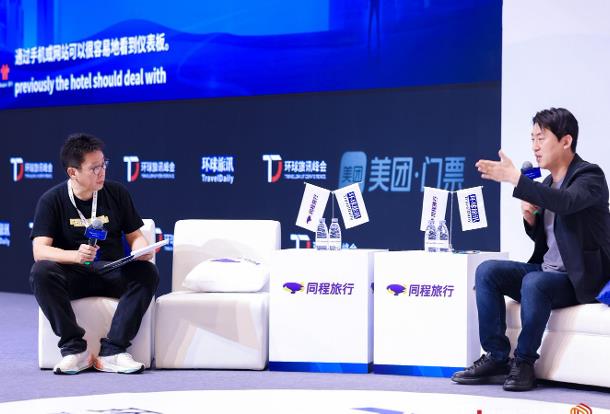ChinaTravelNews, Ritesh Gupta -In China, travel companies are still predominantly working on static rates. In fact, some of the Chinese OTAs work on this model too.
Hotel companies acknowledge that dynamic pricing demands a certain level of expertise and perseverance.
The task of a revenue manager is multi-layered, and it starts with astute forecasting. As much as forecasting is critical, working on the matrix of price combinations (based on the total number of rate levels, types of rooms and market segments) can be an exacting process. The role of data, analytics and software is gaining prominence as far as pricing is concerned, but a section of the industry still refers to pricing being a recommendation process driven by human intervention.
Also, setting up an apt distribution technology infrastructure that can optimize a hotel’s inventory is equally important.
Shift
Talking of the latest trends in hotel distribution technology, Singapore-based Daryl Lee, regional vice president - Sales & Marketing, Asia Pacific, Middle East & Africa, GTA, says dynamic rates (generally known as BAR or Best Available Rate) are becoming a common place for not just international chain hotels, regional chains and independent hotels are also adopting this, prioritizing over static contract rates.

Daryl Lee, Regional Vice President of GTA
“The change in hotel distribution favouring dynamic pricing (prices that are set almost real-time for revenue optimization) is possible because switches and channel managers are now more readily available (with increasingly standardized API),” says Lee.
“We see a shift from packaged products with ‘fixed’ pricing that traditional Chinese agents preferred so far. It also means the landscape will get less conducive for them. On the contrary, some of the Chinese OTAs (not all) will probably gain share (especially the ones who were earlier adopters of distributing dynamic rates),” added Lee.
China still focused on static rates
Hotels all over the world have been working on static i.e. fixed/ contracted rates and fixed allotments for travel agents.
“This model was on the basis that there are so many travel agents in the world and there was no effective mechanism in the past to have a floating rate arrangement, said Lee. “It was also because many travel agents and tour operators have been working on brochure programs (that often package hotels, sight-seeing tours, transfers and sometime even airfare), which means after a price is printed in a brochure, it is not realistic to change it (which is expensive as you will have to re-print the brochure and then distribute it to their retail outlets or sub-agents etc).”
But hotels now see a growing number of travel companies, especially travel wholesalers and aggregators embracing newer distribution technology to access the hotel’s dynamic rates and inventory much like what the global OTAs have been doing in the recent years.
“They do so normally by relying on switches (e.g. Pegasus, Derbysoft) and/ or channel managers (e.g. Siteminder, Ratetiger) that will pull rates and inventory from the hotel’s Property Management System (PMS). In other words, travel agents can now work with hotels on a more dynamic model that allows hotels to flex their rates up and down depending on occupancy and forecasted demand,” shared Lee.
Therefore, hotels will start to increasingly be more reluctant to work on a fixed static rate regime as they see the dynamic model to be more flexible, giving them greater control which should translate to better RevPAR yield.
“Of course, the assumption is that a large enough population of travel companies for each hotel adopts the dynamic model and work with the hotel to distribute their product using a floating rate. In China, travel companies are still predominantly working on static rates. In fact, some of the Chinese OTAs work on this model too. As hotels lean more towards dynamic rates, the early adopters of distribution technology that give them access to dynamic rates will have a more advantageous position over those who still prefer to ‘insist’ on a fixed rates, dedicated allotment model,” explained Lee.
Readiness of intermediaries
The market in China is huge, complex and fragmented, and it is important to reduce the complexity in the next few years for both suppliers and travel companies. For this, investment in technology is going to be the key, said Lee, referring to the outcome of a discussion at the recently held g meet Summit at Bangkok, Thailand, an event jointly hosted by GTA and the Tourism Authority of Thailand.
There is a huge disparity in the status and adoption of available travel technology across various markets, pointed out Lee. For example, in South Korea, more than two-third of travel companies have invested and utilize API connectivity to manage their inventory and products. On the contrary, the percentage in China is still very low, in the low single-digit, he said. “But this also means opportunities are huge for markets like China and players who are early adopters of API technology will have a tremendous advantage as they are able to provide real-time and last minute availability, a wide range of products across hotels, room categories, rate plans, tariffs and destination markets,” said Lee.
A lot needs to fall in place before a room or a tour/excursion can be booked by a travel agent. With deep fragmentation, there is no `open source’ or a common platform that suppliers can simply be connected to and supply to travel agents around the globe. “So market players who can effectively differentiate through technology and/or connect with technology partners and make it a rounded, easy and a seamless experience will compete far better and achieve greater success,” said Lee.
It also needs to be noted that not every travel company has the requisite funds to embrace technology including going digital and providing mobile access. “These players should work to partner with aggregators who have their portfolio of inventory, rates, products managed systematically through technology that are relevant to the market,” said Lee. “The intermediary hotel market is worth US$170 billion and growing exponentially. Apart from giants like Expedia and Priceline, there are thousands of smaller players out there who try to innovate and give a different digital experience. So, there is an even larger opportunity for B2B players who can facilitate smaller players to grow (through inventory, technology, HR support, etc).”
Gearing up us a foreign B2B player
Sharing his perspective on what does a foreign B2B player needs to focus on when it comes to China, Lee suggested that when investing and rolling out distribution technology, understand the landscape, market peculiarities in China such as the technology adoption level, preference for cache over ‘live’ feed, differing demand/ seasonality between the different regions (e.g. it has been observed that Chinese travellers from the South have a greater demand for destinations in SE Asia such as Thailand while Northerners are more attracted to South Korea, Japan, Taiwan simply from a flying time/cost perspective).
As for how Chinese hotels can push their inventory in relevant demand channels through meaningful partnerships with foreign B2B intermediaries, Lee said the foreign chains have connectivity to large foreign B2B players from their global commercial arrangements. In contrast, the local chains and independent hotels have not adopted travel distribution technology. Therefore, there is a huge potential to better distribute their content/ products to a wider travelling community of international travellers by working with foreign B2B aggregators and wholesalers. This should allow them to reduce their dependence on the domestic market and be ahead of their own competitors. Travel technology is increasingly easy to adopt as APIs become more standardized.




